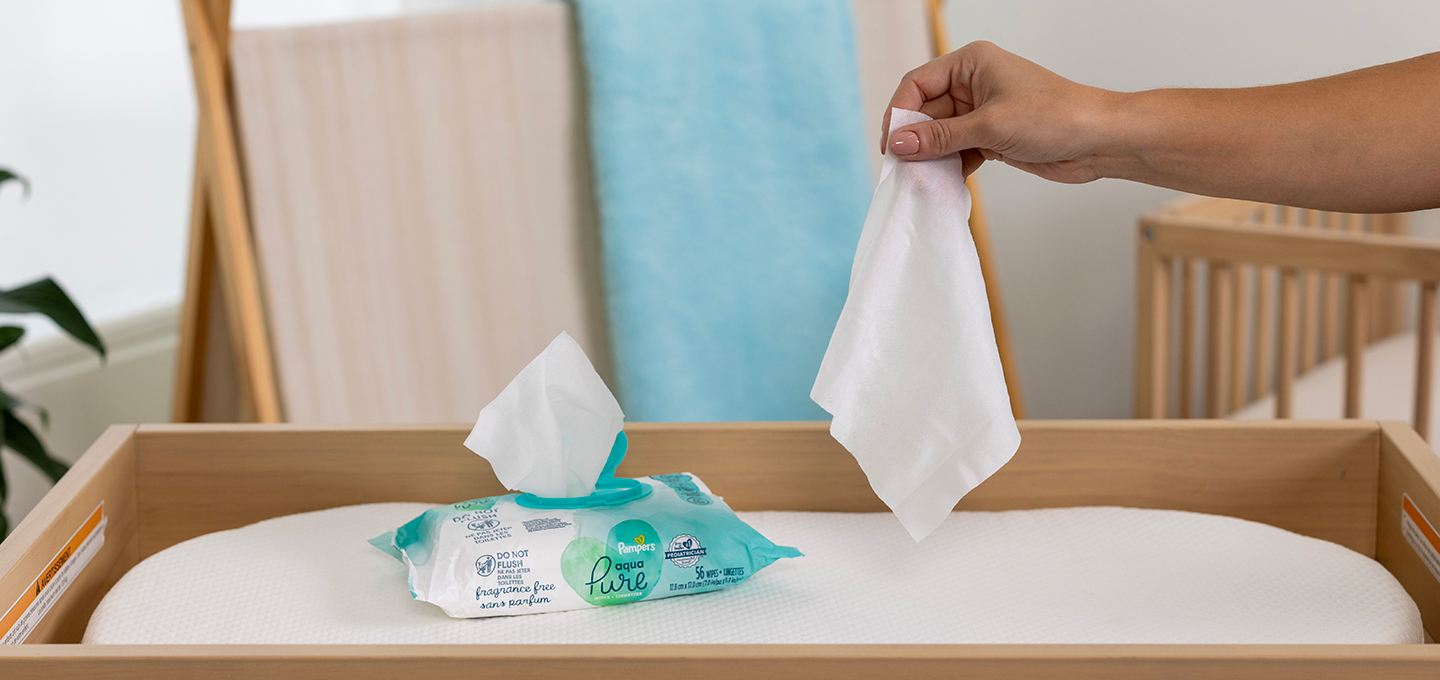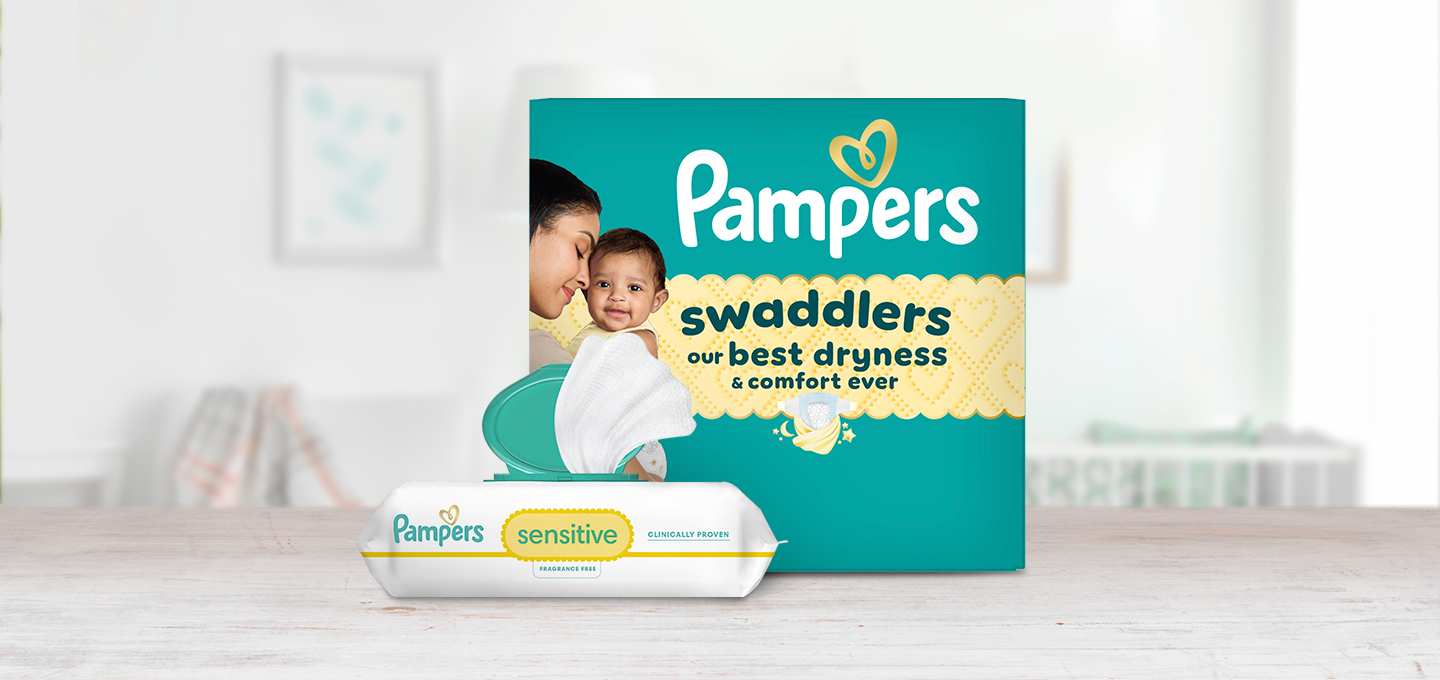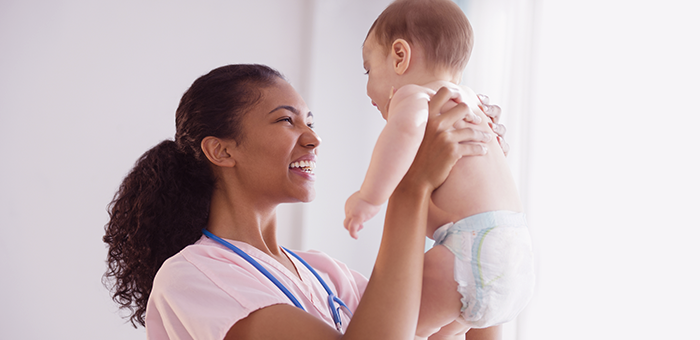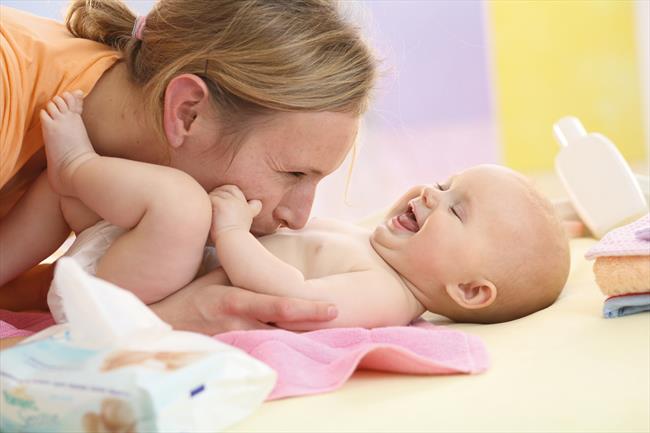
Your Guide to Pampers Baby Wipes
8 min readUpdated November 16, 2025

MD, FAAP
8 min readUpdated November 16, 2025

MD, FAAP
Choosing the right baby wipes can be overwhelming with so many options on the market. Our Baby Wipes Guide simplifies your decision by comparing the most important factors parents care about: safety, ingredients, sensitivity, cost, and plant based. Whether you're looking for fragrance-free wipes for sensitive skin or budget-friendly picks for everyday use, this guide has you covered.
Key considerations include:
Let’s explore each category to help you find the best baby wipes for your family’s needs.
Why Should You Use Baby Wipes?
Baby wipes are essential for maintaining your baby's hygiene. They offer a convenient and effective way to clean your baby's skin from top to toe, especially during diaper changes. They’re also handy for diaper changes on the go, or sticky hands and faces—for the whole family.
All of our wipes do the following to help protect the skin:
Using baby wipes can also help prevent skin irritation, which is one of the main causes of diaper rash, by keeping your baby’s diaper area free from urine and stool, which can irritate their delicate skin.
What Are Wipes Made Of?
Pampers baby wipes are thoughtfully crafted using a gentle, effective formula and soft materials to help clean your baby’s skin without irritation. Every element is designed with safety, comfort, and performance in mind—whether you're wiping bottoms, hands, or even your baby’s delicate face. Pampers wipes have undergone independent research and safety evaluations approved by the Skin Health Alliance (SHA), confirming their safety for contact with a baby's skin.
Soft, Cloth-Like Material
The base of every Pampers baby wipe is made from a carefully selected fiber blend that ensures softness, strength, and flexibility. This unique material helps you gently clean all the contours of your baby’s body—from tiny toes to squishy cheeks—with ease.
The wipe fabric is formed from interwoven fibers that create a soft, stretchy, and cushion-like texture. Depending on the product, Pampers wipes are made from:
These baby wipe ingredients provide a gentle, cloth-like feel that’s suitable for everyday cleaning without compromising on strength or absorbency.
Gentle, Water-Based Cleansing Lotion
Pampers wipes are more than just moist towelettes—they’re infused with a carefully developed lotion that not only cleans but also cares for your baby’s skin.
Here’s a look at some of the key ingredients found in Pampers baby wipes:
This lotion is free from alcohol and harsh additives, and it’s been dermatologically tested to be mild, even on sensitive skin.
Safe and Effective Preservatives
To ensure the wipes stay fresh and hygienic once the packaging is opened, Pampers includes a small amount of carefully selected preservatives. These baby wipes ingredients prevent microbial contamination from exposure to air and hands, helping keep each wipe safe and clean until the very last one.
Importantly, Pampers is committed to safety and transparency. Our wipes never include common irritants or controversial ingredients. You can review our No-Go ingredient list here.
Effective Packaging for Freshness
The main purpose of our wipes packaging is to keep Pampers Baby Wipes fresh, moist, and ready for use. Since the lotion in the wipes contains up to 98 percent water, our packaging is designed to provide a strong moisture barrier that helps keep each wipe damp. We have also developed specially designed polymer films that are flexible, printable, and effective at preventing moisture vapor from escaping.
One important aspect of wipes packaging is its design, which allows parents to easily grab a wipe with one hand. Designed to dispense one wipe at a time so you only get what you need. Features like a "pop-up" mechanism simplify this process, saving time and preventing any wipes from being wasted.
How to Choose Baby Wipes?
Choosing the right baby wipes involves considering several factors:
Scented vs Fragrance-Free Baby Wipes
When choosing between scented and fragrance-free baby wipes, your baby’s skin sensitivity is the most important consideration.
Fragrance-free baby wipes are generally recommended for newborns and babies with sensitive skin. Added fragrances, even natural ones, can sometimes irritate delicate or allergy-prone skin. Pampers offers a variety of fragrance-free options, including:
On the other hand, scented baby wipes can be a pleasant option for parents who prefer a light, fresh smell during diaper changes. If your baby has no known sensitivities or allergies, and you enjoy a gently fragranced wipe, Pampers provides:
While fragrance-free options are generally considered the best baby wipes for sensitive skin, some families may choose scented versions for older babies or toddlers, particularly if there's no sign of irritation. Always test a new product on a small area first if you’re unsure how your baby’s skin will react.
Water-Based Wipes Vs. Normal Baby Wipes
Water-based wipes, such as Pampers Aqua Pure, contain 99% water and are ideal for sensitive skin. They provide a gentle clean without the use of harsh chemicals. Other baby wipes may contain additional cleansing agents and fragrances, which could be less suitable for sensitive skin.
Non-Toxic Baby Wipes Ingredients
Non-toxic baby wipes are free from harmful chemicals like alcohol, parabens, and phthalates. Your baby’s safety is our priority; therefore, Pampers baby wipes are formulated without the following ingredients to ensure they’re non-toxic:*
*Remember that some of these substances are present in everyday life, and therefore may be present in trace amounts of everyday household items, such as drinking water, air or dust. What’s important to remember is that every substance has a safe threshold, and we’ve spent decades working with health care professionals and regulatory agencies to define those thresholds. We will NEVER use an ingredient that poses harm to your baby.
Like you, we put your baby’s safety first with absolutely no compromises. From sourcing quality ingredients to clinical testing and everything in between, we deliver on our Safety Promise every day.
What Are PFAs in Baby Wipes?
Per- and polyfluoroalkyl substances (PFAs) are synthetic chemicals found in various consumer products. There is growing concern about PFAs due to their potential health risks. At Pampers, we do not use PFAs in our baby wipes, aligning with our commitment to safety.
Plant-Based and Plastic-Free
When it comes to choosing the best baby wipes for toddlers and newborns, many parents look for biodegradable baby wipes or products that support a more sustainable lifestyle. At Pampers, we understand the importance of eco-conscious decisions and are continuously working toward better solutions for your baby and the planet.
Pampers offers a plant-based and plastic-free option:
At Pampers, we aim to offer healthy baby wipes that are not only safe for your baby’s skin but also developed with our planet in mind. For families committed to sustainability, understanding how wipes are disposed of—and seeking out plastic-free or plant-based options—is key.
Sensitivity
For babies with sensitive skin, choosing the right wipes can make all the difference. The best baby wipes for sensitive skin are those that are hypoallergenic, free from harsh chemicals, and specially formulated to be gentle while still effectively cleaning.
Pampers Sensitive Wipes are one of the most trusted wipes for sensitive skin. They are:
Whether you're using them during diaper changes or as face wipes for sensitive skin—like after meals or messy play—Pampers Sensitive Wipes provide a soft, thorough clean without irritation.
Reusable Baby Wipes vs. Disposable
Reusable baby wipes are often made from cloth and can be washed and reused, offering an eco-friendly alternative to disposable wipes. However, they require more effort to clean and maintain. Disposable wipes, like those from Pampers, offer convenience and are designed for single use, ensuring optimal hygiene and ease of use.
Below, you can learn more about the benefits of using Pampers Baby Wipes over water and a cloth.
Curious what else belongs in your diaper bag alongside wipes? Take our quick quiz to find out!
Is Water Alone Good Enough?
Decades ago, a wet washcloth was the gold standard for cleaning a baby’s bottom; however, water itself cannot remove oily substances (like lipids in stool from the skin). Recent studies (including Pampers) have also shown no advantages of using water over modern baby wipes, as it does not have a pH-balancing ability. Our Sensitive wipes actually keep skin healthier than using water and a washcloth.
In fact, many professionals have decided to recommend a modern wipe for their patients instead.
Over time, using water and a cloth can also have a negative effect on skin. If washcloths and sponges are used, they can irritate your baby’s skin or even reintroduce germs if they are not properly cleaned.
Are Baby Wipes Antibacterial?
Most baby wipes are not antibacterial, as they are designed to gently clean a baby's skin without the use of harsh chemicals. Using antibacterial wipes on babies is generally not recommended, as they may contain ingredients that can irritate sensitive skin.
Are Baby Wipes pH Balanced?
Scientifically speaking, pH is the level at which something is acidic or basic (on a scale from 1-14). According to recent clinical studies, managing infant skin pH is an important way parents and professionals can help keep a baby’s developing skin healthy.
Healthy infant skin has a natural pH level around 4.7-6, but diaper mess can increase the pH, which activates stool enzymes that will digest a baby’s skin, making it more susceptible to rashes. Pampers wipes counteract these irritants by introducing a pH balancing lotion to restore the skin’s natural pH.
Over the past several decades, multiple clinical studies have shown Pampers wipes to be mild, safe, and effective cleaning products that can care for a baby’s skin. In 2009, a scientific study compared Pampers wipes with water and cloth. The findings stated that water and washcloth did not maintain the skin pH at a normal level after cleaning, whereas the Pampers wipes were able to keep the pH below 6. Studies have also shown that using Pampers wipes can restore and maintain the skin’s natural pH level, and lead to less erythema, helping maintain the health of your baby’s skin. You can find out more about our product’s materials and safety in our informative article.
Additionally, clinical studies have shown that using a wipe with pH-balancing lotion, in combination with a super absorbent diaper, like Swaddlers, can improve the overall health of a baby’s skin.
How to Use Pampers Wipes on Your Baby
Using our baby wipes is simple and effective. Here’s a quick guide on how to use them, whether you have a baby boy or girl.
How to Wipe a Baby Girl
When cleaning your baby girl’s diaper area, be extra careful to wipe from front to back. This helps reduce the risk of infections, such as a urinary tract infection (UTI), as these are especially common among girls. Don’t forget to gently and thoroughly clean between the folds of skin.
How to Wipe a Baby Boy
Cleaning your baby boy's diaper area with baby wipes is like cleaning your baby girl—front-to-back cleaning is still recommended. Additionally, you can cover his penis with a diaper or burp cloth while changing him to prevent any spraying if he decides to pee during his diaper change.
If you want to know how to wipe a baby with diaper rash, it’s simple and similar to the information above. Use our fragrance and alcohol-free baby wipes, such as Pampers Sensitive Wipes and gently cleanse the area without rubbing. You can also apply a diaper rash ointment or barrier cream to the affected areas.
Can You Use Baby Wipes on a Baby’s Face?
Pampers baby wipes are safe to use on your little one’s face, hands, or anywhere on their body. They are hypoallergenic, with 0% alcohol and parabens, making them safe for sensitive skin.
Are Baby Wipes Flushable?
This is a common question, and many parents wonder if baby wipes are flushable. The answer is no, do not flush! It’s recommended to throw wipes away with diapers. If in doubt, just follow the instructions on our diaper and wipes packaging.
Wondering what happens if you flush baby wipes? It can cause damage to your plumbing, as well as environmental problems, as the wipes don’t break down like toilet paper.
Can You Bring Baby Wipes on a Plane?
A common question from parents is, “Are baby wipes considered a liquid when flying?” The Transportation Security Administration (TSA) does not consider baby wipes a liquid, so they’re not subject to the 3-1-1 liquids rule. You can pack them in your carry-on diaper bag or checked luggage without restriction, making them travel essentials for diaper changes, sticky hands, and quick cleanups in-flight.
Keep a small pack easily accessible in your carry-on for convenience during the flight.
How Many Wipes Does a Baby Use?
With all those diaper changes, it’s common for parents to wonder, “How many baby wipes do I need?” This all depends on the mess your little one makes in their diaper. On average, one to three wipes may be needed per diaper change. However, be prepared to use more for a dirty diaper. Using wipes for both wet and dirty diapers is recommended, as they provide the most effective cleaning for a baby’s skin.
So, to discover how many baby wipes you might need, find out how many diapers you need each day (Clue: a newborn needs an average of 10 diaper changes per day, which decreases as they get older).
FAQS AT A GLANCE
Resist the urge to flush wipes down the toilet—this will be kinder to your bathroom pipes! Instead, throw your diapers and wipes in the trash. It’s a great idea to
have a small, hands-free bin (with a liner) for used diapers and wipes next to
your changing table. Once the diaper bin is full, dispose of the diapers and
wipes along with your household waste.
The Bottom Line
Choosing the right baby wipes is about more than convenience—it’s about caring for your baby’s delicate skin in the gentlest, safest way possible. Whether you prefer water wipes for babies, non-toxic baby wipes, or wipes designed for sensitive skin, Pampers offers trusted options that are backed by science and loved by parents. From newborn messes to toddler cleanups, Pampers baby wipes combine mild ingredients, soft materials, and pH-balanced care to support your little one’s skin health at every stage.
No matter your family’s needs—scented or fragrance-free, on-the-go or at home—you can feel confident knowing you're using wipes developed with safety, comfort, and your baby’s well-being in mind.
If you want to earn rewards on baby wipes for your little one’s big clean-ups, download the Pampers Rewards app today and start collecting Pampers Cash.
Read more about Baby
Related Articles
Join a World of Support
through Pregnancy and Parenthood.





